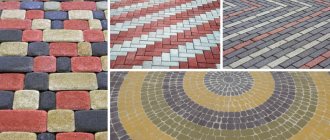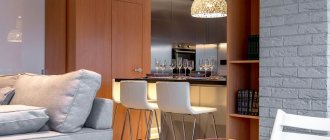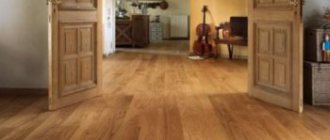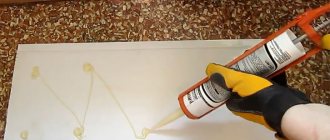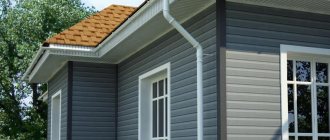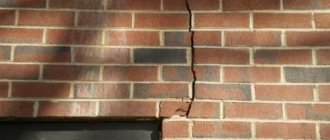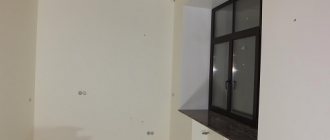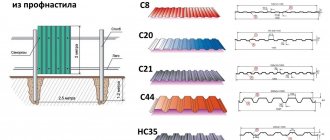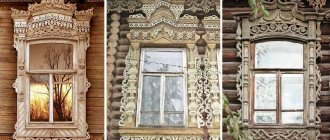What are decorative tiles?
The main task of this tile is a realistic imitation of natural surfaces (wild stone, brick). It is made from gypsum or cement, with the addition of sand and certain dyes.
Cement tiles are used to decorate facades, fences and landscape design elements.
Gypsum - recommended for interior decoration.
Peculiarities
Perhaps the main feature of decorative tiles is their relief. This material can convey the texture of stone, brick or wood with varying degrees of realism, while differing from them in ease of installation and aesthetics.
As a rule, real stone or brick in the interior does not look very nice, unlike tiles. Plus, it provides a wider range of design nuances.
If necessary, this material will help create the atmosphere of a medieval castle, a Warsaw apartment of the 60s or a monolithic fortress wall.
Unlike many other coatings, gypsum tiles are pleasant to the touch and by their very appearance creates a feeling of warmth and home comfort. It can be an ideal choice for owners of country houses and other spacious premises.
In small rooms with low ceilings, this material should be used with caution so as not to make the space visually too limited and untidy.
pros
It is no coincidence that decorative tiles are among the Top 3 most popular finishing materials. This is due to its many advantages:
- depending on the characteristics of the composition and manufacture, it can be used to decorate any surfaces;
- has a spectacular and pleasant appearance;
- goes well with other types of cladding (wallpaper, mosaic, glossy and mirror tiles, plaster, frescoes, etc.);
- with the right approach, it will perfectly disguise unevenness and other wall defects;
- The widest selection of shades and textures is available, which allows the safe use of decorative tiles in the design of rooms of different sizes, lighting and style directions;
- easy to install yourself.
Another advantage of this material is its lightness. Such tiles can be used in the design of plasterboard partitions and walls, creating interesting effects.
Minuses
When choosing a suitable material for cladding, it is necessary to take into account the disadvantages of decorative tiles:
- intolerance to high humidity (recommended only for finishing dry and well-ventilated rooms);
- relative fragility during transportation and installation;
- poor wear resistance and difficult to maintain (quickly loses its presentation due to frequent wiping and other types of cleaning).
Pros and cons of products
The correct approach to processing any material is ensured by understanding its nuances. That is why there is a need to consider the positive and negative aspects of this type of finishing. Among the advantages of gypsum stone are:
- light weight;
- environmental friendliness;
- ease of giving the required shape;
- softness;
- low cost;
- ease of installation;
- hypoallergenic;
- possibility of painting;
- possibility of self-production;
- fire safety;
- long service life;
- UV resistance.
True to its name, gypsum stone consists entirely of natural ingredients. Due to its structure, gypsum is lightweight, which makes it possible to place this type of finish on surfaces that have a maximum weight limit. Since the components of the finishing material are natural, we can talk about the high environmental friendliness of the product, which allows finishing not only external but also internal walls.
The stone is quite soft, so it can be shaped and processed at will. This does not require special diamond-coated tools; a regular hacksaw will suffice.
If you make such a stone yourself, then its cost will be equal to the cost of the base, shapes and time spent on production. But even ready-made copies have a low price, which allows you to give your walls an attractive appearance on a small budget. Installation is also not particularly difficult and does not require unique skills.
The technique can be mastered quite quickly. The main requirement is the correct choice of glue that will be used during the installation process. You can use such a stone for decoration even if someone in the family suffers from allergies. The composition contains no harmful impurities that could affect the human immune system.
When making your own or purchasing, options are available in white. Individual gypsum elements can be painted independently using the required shade, which allows you to adjust the color of the stone to the overall background, and not vice versa. Gypsum stone does not burn or melt, so when exposed to high temperatures, you do not have to worry about the possibility of a fire.
The service life will be limited only by the mechanical impact that will be exerted on the stone during operation. The stone is resistant to ultraviolet radiation, so it can be installed in areas exposed to the sun.
The number of disadvantages compared to the advantages is small, but they also exist:
- low strength;
- instability to moisture.
With a certain amount of force, gypsum stone can be broken by hand. This indicator hints that it is better not to use it in places where mechanical impact is expected on the surface that has been decorated. It is impossible to restore the element, so you will have to make considerable efforts to replace it with a new one if it is damaged.
Due to its porous structure, gypsum stone is afraid of moisture and allows it to pass through well. This means that it is generally not used on surfaces that are exposed to precipitation. The disadvantage can be partially mitigated by using special coloring compounds that create a protective film on the surface of the stone.
Decor
This material is universal and can look organic in the implementation of a variety of different (sometimes even mutually exclusive) stylistic directions. You just need to choose the right texture and color of the coating.
Brick
Imitation of natural brick in wall decoration has long been firmly established in design trends. Such tiles are successfully used not only in the embodiment of loft or rustic styles. Modern technologies make it possible to produce “bricks” with various nuances of palette and relief. This significantly expands the scope of their application:
- industrial styles (high-tech, loft);
- “country” (country, chalet, rustic);
- Gothic and neo-Gothic;
- English and French Provence;
- Scandinavian style;
- Mediterranean destinations.
Each of these areas implies its own requirements for the design of brick tiles. Ready-made collections from manufacturers, designed specifically for a specific interior style, will help you make the right choice.
Decorative tiles in natural shades and a warm palette (red-brown, beige, cream, vintage tones of orange and brown) are now very popular. The “brick” in white or black looks interesting, as well as all the color variations of gray.
Stone
A special atmosphere is created by decorative tiles made to look like stone. It is incomparably easier to work with than natural stone, and its range of applications is incredibly wide.
A common way is to combine a rough imitation of stonework with soft-textured accessories and furniture in soft colors. Such a contrast always looks interesting and stylish.
Other popular options:
- imitation of rock texture (in gray, brown and even white);
- granite (any sizes and shades);
- stone mass (imitation of a solid stone layer of gray or brown color).
Antique tiles
Thanks to the variety of textures and shades, decorative tiles successfully convey the effect of antiquity. At the same time, the designer is by no means limited to the Gothic or castle style. The many available collections allow you to embody the most subtle nuances of any era and movement:
- aged stone or brick in a medieval spirit (distinguished by its rough relief and natural colors);
- imitation of Roman-era stonework;
- “antique” ivory-colored cladding with unusual textures;
- monolithic tiles in gray shades, conveying the atmosphere of Romanesque fortress walls;
- for the exterior decoration of houses in the Provence style, tiles imitating aged brick in yellow and orange tones are used;
- vintage tiles in gray, red-brown and orange colors create the mood of a respectable pre-revolutionary apartment;
- in landscape design, varieties of tiles imitating antique cobblestones are especially successful (they go well with living vegetation).
Recently, cladding that conveys the texture of an ancient clay or sand coating has become increasingly in demand.
Loft
Typically, when implementing a loft style, ceramic tiles imitating brick are used. However, decorative gypsum coating feels more comfortable and warm, and it is also more pleasant to the touch. At the same time, the range of colors and textures in this case is no less wide. Decorative tiles in many cases have an even more pronounced relief than ceramics.
The basic rules of application are the same here. Spacious rooms with high ceilings and good lighting are preferred. Also, do not get carried away with using “brickwork”, harmoniously diluting it with matching wallpaper or decorative plaster.
A win-win option would be to brick only one wall. To decorate the remaining surfaces, materials of other gray textures are used.
Also, often only certain parts of the room are decorated with brick-like tiles (window niches, doors, certain areas). This allows you to make the room brighter and more comfortable.
Castle
Due to its ambition and coldness, this style is used extremely rarely. Such a design will be harmonious in a spacious country house.
Here again, decorative tiles that look like aged brick or stone will come in handy. Imitations of monolithic stone pavement and cobblestones also look good.
It is best to choose a natural color palette, with a predominance of warm shades (brown, gray, yellow). By complementing such an interior with antique furniture and accessories made of metal and wood, you can achieve a pleasant environment that brings a feeling of security and home comfort.
Rustic
The rustic style is less gloomy and, unlike the castle style, allows some liberties in decoration. For example, in this case, rough wall cladding imitating antique stone or brick can be diversified with bright decorative wood inserts (exposed beams, plank floors, cornices), colorful accessories in ethnic and boho styles, and wicker furniture.
Tiles here are available in a variety of textures and colors. The light and warm palette is especially popular. Sometimes a variety of “tasty” tones (coffee, cream, chocolate) are also successfully used.
At the same time, decorative stone can cover only certain areas of the room, combining well with wallpaper and plaster on other surfaces.
Types and features of stone for wall decoration
Thanks to a wide range of shades, textures and methods of laying artificial stone on the wall, you can choose the most interesting option for your interior.
How to properly lay decorative tiles on a wall will be described below. It is important to understand the difference, there is:
- Natural facing stone;
- Decorative tiles - imitation.
From natural stone, preference is given to tiles made of sandstone, limestone, shell rock, basalt, tuff and granite. Used frequently:
- Natural marble. Elite cladding, its reserves are almost exhausted, but hard synthetic analogues are produced. Among the popular shades are white and black marble, beige, reddish and olive shades of this stone.
Elite cladding, its reserves are almost exhausted, but hard synthetic analogues are produced. - Hewn sandstone slabs. There are fine-grained textures, coarse-grained and medium-grained batches. Lots of milky, reddish and chocolate shades are available. Sandstone looks good in mosaic layout and chaotic alternation of multi-colored slabs.
Sandstone looks good in mosaic layout and chaotic alternation of multi-colored slabs. - Granite. Traditional facing material, not very heavy, can be processed. The cladding will decorate the hallway, living room, or any other room. Smooth slabs can be laid on the floor.
The cladding will decorate the hallway, living room, or any other room. - Naturally polished sea pebbles. Suitable for combined laying of decorative stone on the wall with your own hands. Heavy weight, non-standard shape and questionable aesthetics complicate the application. But this material can be found on the seashore and used in some design solutions.
Suitable for combined laying of decorative stone on the wall with your own hands. - Limestone (shell rock) is a dense structure of marine calcium. The material is cut into slabs for laying in rows. The most common varieties are milky, gray, yellowish and pinkish.
The material is cut into slabs for laying in rows. - Slate. It is distinguished by a characteristic texture, thanks to which it is laid with jointing and “seamless” laying of decorative stone on the wall.
It has a characteristic texture.
Synthetic and composite materials are widely used. Natural stone chips are poured into a transparent polymer base, from which countertops and slabs are made. It imitates onyx, jasper or malachite.
Artificial “stone” will enhance any interior thanks to its interesting texture. A wider variety of decor is produced on an environmentally friendly basis:
- Gypsum;
- Cement.
Gypsum boards are lightweight but fragile. Without additional preservation with colorless varnish, gypsum stone is unsuitable for rooms with fluctuations in temperature and humidity. Practical cement-based decor is a universal finish for facades and interior spaces without heating.
Artificial “stone” will enhance any interior thanks to its interesting texture.
Preliminary preparation
Depending on the specific surface, its preliminary preparation may be different. However, in any case, it is necessary to achieve a high-quality result. This stage includes the selection of materials and suitable tools, as well as preparatory processing of the walls.
Tools
You need to collect the following tools in advance:
- hacksaw for metal
- grinder for stone;
- building level, square, tape measure and cord;
- spatulas (notched and regular);
- brushes, roller;
- rubber hammer.
This list may vary depending on the nuances of the work to be done and considerations of personal convenience.
Surface preparation
Here the volume and complexity of preparation depends on the characteristics of the surface. Walls without any finishing are ideal. It is enough just to thoroughly clean them from dust and dirt, and then cover them with primer several times.
Surfaces already coated in any way will have to be pre-cleaned of the old finish.
Dismantling the coating
Various dismantling methods are possible. Their choice is dictated by the characteristics of the materials used in the old coating.
- Latex paint. After cleaning the wall from dust, this coating should be moistened generously with water and wait a while. After this, the paint can be scraped off with a spatula. Usually it sticks securely to the walls, so removing it is not always advisable.
- Oil-based paint is processed with sandpaper. Existing cracks, peeling and other defects are carefully cleaned and covered with putty.
- Chalk whitewash is easily washed off with water.
- Paintwork can also be sanded, sanded and wiped well.
- Tile. You can get rid of it using a spatula or knife, after thoroughly wetting the grout with water. If the work has to be carried out in several stages, it is recommended to wet the seams each time. This method is justified if fairly soft grout was used. Otherwise, a grinder will be useful for working with stone, with which you need to clean the seams.
Alignment of walls
Having gotten rid of the remnants of the old coating, the walls need to be leveled. All cracks and surface irregularities are filled with gypsum plaster with mandatory reinforcement.
After the putty has dried, it must be rubbed well, finally leveling the surface.
Padding
Mandatory priming of the walls will help increase the effectiveness of the adhesive composition. High-quality primed surfaces will improve adhesion.
It would be a good idea to coat the back side of the tile with a special primer (an acrylic-based composition is suitable here).
Even when working on wood or plasterboard surfaces, a primer is necessary.
Cladding technology
Regardless of the type of surface on which the tiles are applied (brick, concrete, etc.), installation is carried out according to the same scenario. First, you need to knead the glue until it has a homogeneous structure if dry cement compositions are used. After this, the material is evenly applied to the wall, covering an area not exceeding one square meter at a time. If sealant or liquid nails are used, then in the first case the glue is distributed in waves, in the second - drop by drop.
After this, you need to glue the first tile by pressing on the stone. It is not recommended to use excessive force at this stage. A small amount of adhesive should come out beyond the tiles. When laying tiles, you must follow several recommendations:
- with a seamless installation method, the procedure must begin from the bottom row (otherwise, from any corner);
- if a stone of the same size is used, then it must be laid so that the final pattern is uniform;
- the cut edges are attached so that they remain unnoticeable to the eye;
- if installation is carried out from the middle of the wall, then a guide rail is first attached to the surface;
- To level the decorative tiles, use a rubber hammer.
To form seams, it is necessary to leave equal gaps between the tiles. Rows of stone should run parallel to each other
At the end of the procedure, excess glue is removed, and the seams are rubbed with a specialized compound, the type of which is indicated on the packaging. It is recommended to apply this product using a pastry bag.
At the end of the procedure, a protective layer should be applied to the tiles. This procedure extends the life of the decorative material. A protective layer is necessary in cases where artificial stone is installed in rooms with high humidity and in houses with children and animals.
Laying tiles
Having completed the preparatory work, you can begin laying the tiles. This stage consists of preparing the adhesive composition, wall cladding and finishing.
Preparation of glue
A suitable adhesive composition is thoroughly mixed in a separate container in accordance with the instructions. The most commonly used are tile or gypsum adhesives, which are prepared with the addition of water. In this case, the resulting mass should have a fairly dense consistency (similar to thick toothpaste).
You should not immediately prepare too large volumes of glue - during the process it may dry out even before it is used. The prepared amount should be enough for about 20-30 minutes of work.
Laying the first row
The prepared glue is applied to the surface to be treated with a spatula. For ease of work, it is better to limit its area to 1x1 meter, gradually moving to new small areas.
The back side of each tile is also covered with glue. It is recommended to lay it starting from the lower right corner, gradually moving from bottom to top.
Before starting work, you need to decide on a single horizon that can be aligned with in the future. This can be done using a building level. The result obtained is temporarily fixed with a wooden strip or cord.
Corner cladding
Corners can be designed in several ways:
- direct joining (tiles are laid perpendicular to each other, so that the edge of one of them protrudes slightly and overlaps the edge of another tile);
- cutting the edges of the tiles at an angle using a grinder (so that their edges perfectly match each other, creating a more accurate coating);
- the use of special plastic inserts (trims) that form the correct angle;
- corner tile elements (some collections include specially shaped tiles designed for lining corners).
Decorating the edges of the masonry
The places where the tiled cladding merges with the rest of the wall surface can also be decorated in different ways (edging, raised border, stucco). However, when using stone or brick tiles, such decorations should be avoided. This coating is interesting in itself and looks good next to any other materials. Additional design of the edges in this case will simply destroy the harmony and atmosphere of the surfaces.
Sealing joints
The seams resulting from the installation process (from 3 to 12 mm) are filled with the same adhesive solution that was used for installation. In this case, two options for sealing joints are possible:
- the seams are sealed directly during installation by squeezing out excess glue (when the adhesive at the joints dries slightly, it is recommended to level it using a shaped spatula or a suitable wooden stick);
- You can carefully fill the seams with the solution after completing the installation using a construction syringe gun (after drying, it also needs to be leveled).
A particularly relief and contrasting result can be achieved if the joints are not sealed to the full depth. A seam filled completely (to the front edge) visually makes the surface smoother
Finishing
Finally, the lined surface must be cleaned of dust and other contaminants using a damp sponge or a special brush. Only after this can it be coated with a protective impregnation varnish. This will make the coating more durable and increase its decorative properties.
The choice of varnish depends on the characteristics of the cladding. Usually a suitable composition is supplied with a specific batch of tiles. However, it should be borne in mind that different compositions impart different levels of gloss to the surface. Therefore, before covering the entire surface with varnish, it is worth testing it on unused tiles.
If, as a result of processing, the coating does not shine enough, the tile can be additionally treated with transparent acrylic varnish. Otherwise, a small addition of water to the impregnation varnish will help reduce the shine intensity.
Do-it-yourself decorative stone laying technology
To complete a small amount of work, it is enough to have suitable glue, a convenient tool and an idea of how to lay facing stone on a wall. In an apartment with gypsum stone they work at room temperature and normal humidity. Installation of external surfaces is carried out in dry weather at positive temperatures.
Before laying, it is important to understand where the front and back sides of the slabs are. The “face” is usually smooth, without roughness or cutter marks, or with characteristic bulges.
It is advisable to first lay out one or two square meters of natural slabs on the floor. This will allow you to evaluate the aesthetics of adjacent fragments and check the consistency of the layers. The adhesive mass is applied to gypsum boards in a zigzag pattern to distribute without sagging. The back of the “stone” on cement is moistened with water. The thick cementitious composition is applied with a notched trowel no thicker than 3-4 cm.
In an apartment with gypsum stone they work at room temperature and normal humidity.
Surface and Material Preparation
Before gluing artificial stone to the wall in the apartment, thoroughly clean the surface. It is important to remove all peelings, old wallpaper and paint using a spatula and a stiff brush. Remove grease stains with solvent. Seal all cracks and cracks with putty.
You will need markings - vertical, horizontal, laying step for adjustment (about every half meter). To do this, prepare:
- Universal building level and plumb line;
- Pencil;
- Square and ruler.
Use a vacuum cleaner to remove construction dust, wash the wall and floor. If adhesion is weak, treat the smooth wall with a primer - perfect adhesion of the surface to the decorative coating is guaranteed.
The standard set for seamless styling includes:
- Set of spatulas, including serrated (for cement composition);
- Rubber hammer for perfect adjustment of stone set on mortar;
- Container for preparing dry composition and a drill with a mixer attachment (kneading);
- Hacksaw and miter box (for angular cutting of gypsum boards);
- File (for finishing edges).
If the tiles will be laid “brick by stone”, you will need jointing crosses and a syringe bag to fill the seams with putty. Excess mixture is removed with a spatula and a thick sponge.
Before gluing artificial stone to the wall in the apartment, thoroughly clean the surface.
How to lay decorative stone with your own hands
When laying, it is necessary to adjust the decorative stone to size, partially trim and cut corners. This is done with a grinder, a grinder with a diamond cutter, or a universal tool attachment.
Under cement compositions, the wall is slightly moistened. Where water rolls off without being absorbed, it is better to lightly scratch the surface with a wire brush for complete adhesion.
A wall with old paint is slippery, and the slabs often slide off. You will have to postpone the installation and cover it with a primer. When dry, begin cladding.
During the pause, it is better to start preparing the material. Preliminary laying of decorative stone will show the pattern. Before it's too late, some of the fragments can be replaced.
In some packaging, the “stones” are of different sizes, suggesting chaotic stacking. It is better to exclude improvisation so as not to break the sequence. Only pros work without adjustment. Every half meter of the level being laid, it is advisable to lay out a pattern on the floor.
It is recommended to start laying decorative stone on the wall in the apartment from the bottom corner. Row by row, new slabs are added as the bottom level grips the wall. The stone should be pressed with little force, pressing into the solution. It is normal to have excess glue in the seams, but remove it on the front side.
It is recommended to start laying decorative stone on the wall in the apartment from the bottom corner.
Covering corners and joints
Upon completion, it is worth considering decorating the “stone” slabs and protective preservation with matte varnish. For interior work on gypsum stone, primers, paints and water-acrylic varnish are suitable. It looks impressive to paint the fragments in a darker and lighter shade than the main batch of tiles.
With standard installation, everything seems to be clear. How to lay decorative tiles on a curved wall? Options are possible with sawing the back side and ends of the gypsum stone, if the convexity is of a large radius. It is recommended to select a “flexible” stone of a suitable pattern to solve problems with the geometry of the space. Mosaic inserts and cladding with other materials are possible.
If household members constantly come across a protruding corner with a new cladding, which leads to damage, the masonry can be fixed with a transparent polymer corner.
It is recommended to select a “flexible” stone of a suitable pattern to solve problems with the geometry of the space.
Sealing seams between decorative stones
The monolithic surface does not require additional finishing of the joints. Decorative stone is laid with matching ends. However, seamless installation requires some experience.
After installation, the seams and gaps are filled with plaster of a suitable color. It is placed in a syringe bag. It is necessary to work so that it is not noticeable where additional plaster has been applied, and the excess must be removed.
The process of laying with jointing is considered more labor-intensive (the slabs are laid in bricks). The decor looks impressive when faced with natural limestone. The plates are secured with crosses. The seams are filled with putty, then the excess is removed with a hard sponge. Dry lumps and small defects, if missed during installation, can be removed by sanding.
After installation, the seams and gaps are filled with plaster of a suitable color.
Tips and tricks
Laying decorative tiles can be done independently. In this case, you should adhere to several useful recommendations:
- when calculating the required amount of tiles, it is worth adding another 10% to it (this reserve will justify itself in case of trimming or accidental damage to such a fragile material);
- the seam between stones or bricks should not be too wide, otherwise a realistic effect will not be achieved, and the use of this material will lose all meaning;
- great attention should be paid to sufficient lighting so that stone or brick walls do not make the room too gloomy;
- lighting fixtures of golden, yellow and other warm shades are preferred (the light they emit will make the room more comfortable);
- at the same time, cooler LED lighting, positioned in the right way, can highlight the interesting texture of the cladding;
- dark stone or brick should be combined with other wall coverings made in lighter and more delicate colors;
- Using tiles that are too heavy, the walls must be reinforced with construction mesh in advance.
Beautiful examples in the interior
The combination of decorative tiles with photo wallpaper is especially interesting. They will emphasize the desired atmosphere and smooth out the roughness of the finish.
No less successfully, the roughness and coldness of the masonry is compensated by the abundance of greenery. Decorative stone goes well with it in any occasion.
Another win-win option for using such tiles is kitchen decor. Stonework will shift the emphasis away from bulky details and make familiar accessories and furniture sparkle with new colors.
Relief cladding is one of the best options for dividing any room into functional zones.
